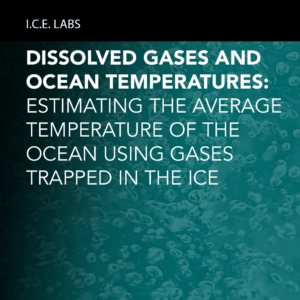Preview
Students observe a subglacial lake model and measure changes in temperature, salinity and sea level rise as the glaciers/ice sheets and subglacial lakes melt.. Students will move from the small model to discussions of implications for Earth systems.
Key Concepts
- Subglacial lakes—non-frozen lakes under vast ice sheets and glaciers
- Ice sheets—large masses of ice found in Greenland and Antarctica
- Diffuse discharge—for some subglacial lakes, the discharge is diffused over large areas
- Focused Discharge—channels can focus water discharge from subglacial lakes
- Salinity—as fresh water flows into the ocean, the salinity of the ocean goes down (freshening)
- Electrical Conductivity—used to measure salinity
- Dissolved Solids—in water these are mainly salts
- Sea level rise—as land-based ice melts, it raises ocean levels




